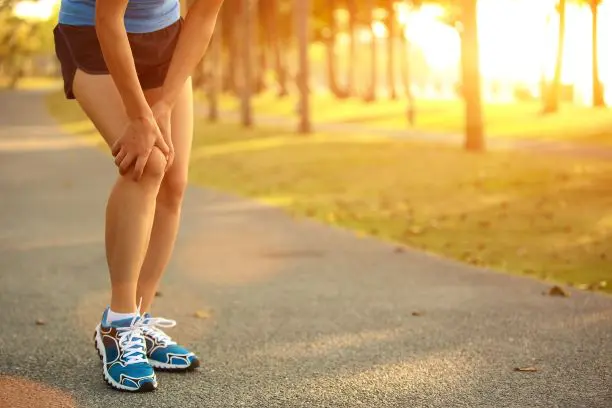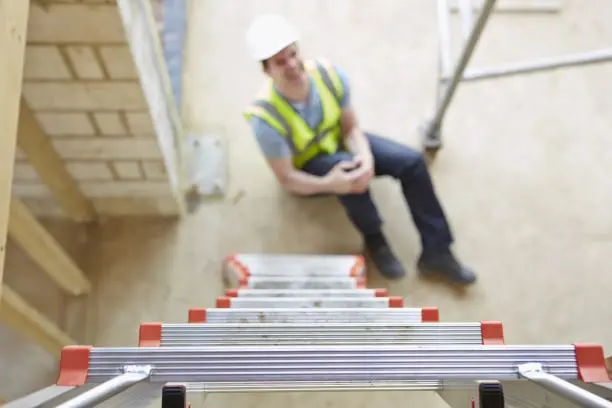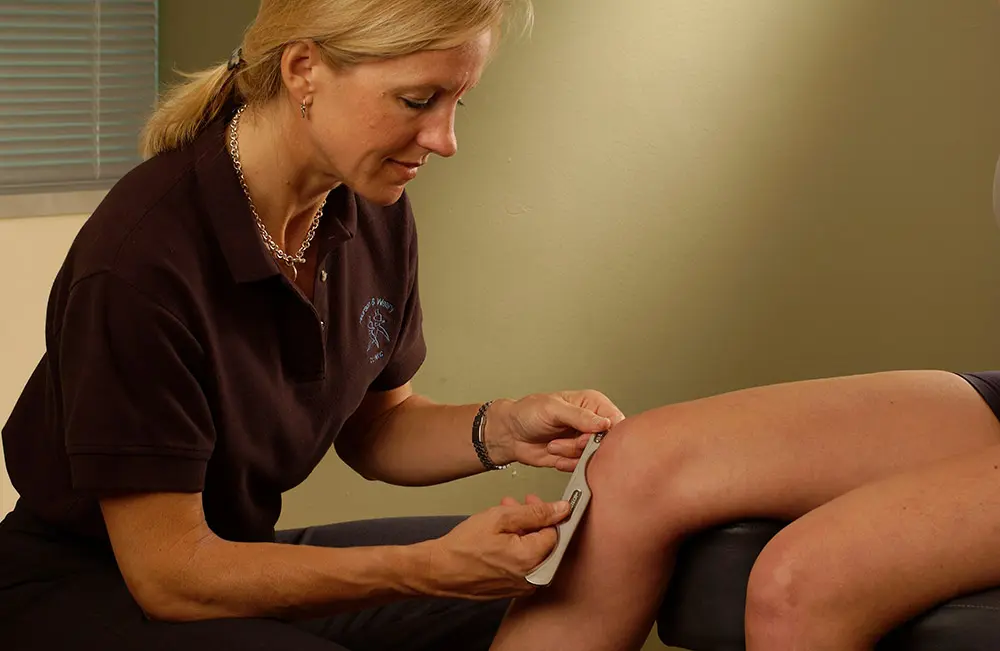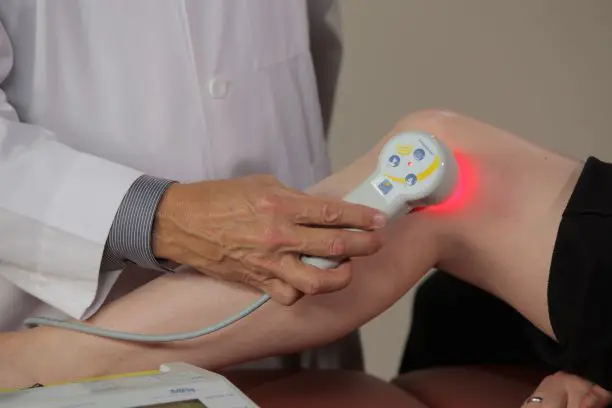Knee Pain
People and runners of all ages are affected by knee pain and wish to get relief. The knee works like a hinge and provides the body with support and the ability to use our legs in a broad range of movement. A great deal of stress is placed on the knee while doing your usual activities and is extremely important in gait and locomotion to include walking and running.
The knee is made up of an arrangement of bones, cartilage, tendons and ligaments and is known to be the largest joint found in the body. Proper movement of the knee permits us to go jogging, sit for extended periods, climb stairs and quickly change directions. The knee is supposed to be a stable joint that acts as a team player with the other joints in the leg.
But, what does the knee actually do? In the body, what does it do and why does to get injured so often? What does having knee pain mean? Can you treat knee pain? You need to be able to understand the structure of the knee to be able to answer these questions, and how that anatomy can protect the joint while allowing it to move properly.

Knee Bone Connected to the…
Several bones come together to make the knee joint: the thigh bone (femur), the shin bone (tibia) and the knee bone or the kneecap (patella), The point near the knee where the tibia attaches to the fibula is also often considered part of the knee when doing evaluations.
Several ligaments strapped the bones associated with the knee together. These ligaments are extremely important to the stability of the knee. The ligaments will stop the knee from bending side to side as well as the knee from shifting front to back. Muscles also attach into the knee from the hip, pelvis and buttocks. Some very important muscles are specific to the knee which are relatively small in comparison to the other extremely large muscles of the legs. Extremely tough cords of tissue called tendons will attach the muscles to the bones.
A cushion is required in between each of the different bones to help to protect the bones and make them easy to move. Between the femur and tibia, a C-shaped rubbery cartilage named the meniscus provides a cushion to absorb external and internal forces that are placed on the knee.
The knee is what is going to allow you to run, jog, walk down a flight of stairs and jump on a trampoline like a kid because the meniscus provides a cushion. This is what allows us to apply forces much greater than our bodyweight during running and jogging without having pain. Athletes can get injuries to the meniscus when too much of the wrong force is applied to the joint. The meniscus itself does not have the best blood supply especially near the center of the joint so can be difficult to heal.
There’s a different type of cartilage called articular cartilage that lines certain bones in the knee at the joint. This cartilage is slippery and allows for the bones to move over each other without much friction. It prevents the surfaces of the bone from grating and rubbing together thereby stopping the degeneration or wearing down of the joint. Loss of this articular cartilage leads to people talking about things like “bone-on-bone” when describing joints.

Why is the knee prone to injury?
Although the knee has structures built in to prevent wear and tear, we are always kind to our knees. The knee is subject to a good deal of stress and repetitive activity, sudden movements, trauma, and normal aging can all be associated with knee injuries. It occurs due to the role the knee plays in movements of the leg and how the knee is attached.
As stated earlier, the knee is supposed to be a stable structure but can be compromised when there is an alteration of movement in either the ankle or the hip. Both ankle and the hip are supposed to be in joints that are more mobile but have the tendency to have restricted motion. Restriction in motion of the foot, ankle and/or hip can lead to the knee needing to move more to compensate. This means that the knee tends to become the victim in cases where the ankle or hip has poor movement.
Depending on the problem, knee injuries can feel different from each other, so getting relief from knee pain will depend on the cause. Sometimes knee pain is described as feeling achy or dull whereas other times the pain might be sharp or burning and you can have knees that feel sore and tight. Knee pain might feel like it is a deep ache inside or it can have pain right on the surface.
Some conditions or injuries that can occur in the knee are arthritis, fracture, bursitis, torn knee meniscus, dislocated kneecap, Other injuries that are common in runners include patellar tendinitis, sprained ligaments, muscle tears, patellofemoral pain syndrome and iliotibial band syndrome.
Knee problems can result from medical conditions or trauma. It’s also possible for a person to have a knee injury without having pain. Inflammation and other symptoms can occur when the knee is not functioning properly. Clicking, popping and locking of the knee can all be indications that you may have a knee condition. You may also notice specific types of movements cause discomfort or decreased overall movement.

Knee pain also does not have to affect the whole knee. Some people have pain either on the inside or the outside of the knee, deep in the knee, in the front or the back of the knee. Pain can make weight-bearing difficult. All of these characteristics, including the location and type of pain, are important to help figure out what is the problem and how to fix the knee.
Certain things like increased age, being overweight, previous injuries to the knee, lack of conditioning, certain types of diseases (like autoimmune conditions or gout) and others can be risk factors associated with an increased likelihood of developing a knee injury.
When Should I Seek Help?
It is a wise idea to make an appointment with our office if you have:
- Injury that causes deformity of the knee
- Difficulty walking on the knee
- Difficulty bending the knee
- Knee pain at rest
- Knee pain at night
- Swelling of the knee or the calf
- Knee pain that lasts many days
- Possible inflammation or infection (warmth, swelling, redness or fever)
How do you get knee pain relief?
The first step towards getting knee pain relief is figuring out what is wrong which necessitates an appropriate evaluation. Musculoskeletal specialists (especially chiropractic physicians with a sports medicine specialization) are the right providers to assess and treat the most common knee conditions. Most conditions do not need imaging, but your doctor may need more information to include x-rays to look at the bones or an MRI to look at the ligaments, muscles and cartilage. Your medical history and examination are often more than enough to establish a diagnosis and begin treatment.
Knee pain relief depends on the specific condition as well as the pain frequency, severity and duration. Some people notice that something is off with their knees and seek treatment to improve their movement and their quality of life.
Conservative care is usually extremely effective at treating different types of knee pain and there are multiple effective conservative choices available to provide relief. Effective treatments might include joint manipulation or mobilization, effective soft tissue work for the fascia and muscles, changes in exercise routine, exercises for strengthening the knee, specific stretches for the muscles and tendons of the knee, and/or modifications for work or around the home. Quality providers will usually teach people exercises to do at home and other self-treatments like foam rolling or self-myofascial release.

Knee pain that is a result of an injury can be typically managed with conservative care to get relief. Usually, an initial trial of care is warranted in most cases where you try treatment for a couple of weeks to see if you improve. When people don’t improve, imaging to include x-rays or MRI is typically warranted at that point. In some cases, your condition will be co-managed by a group of providers, like your primary care provider, an orthopedist and a physical therapist.

Knee pain often goes away by itself within a few days. But if the pain continues to recur or if you can’t make it go away, then it is time to call your certified chiropractic sports physician to make an appointment for a proper evaluation.
